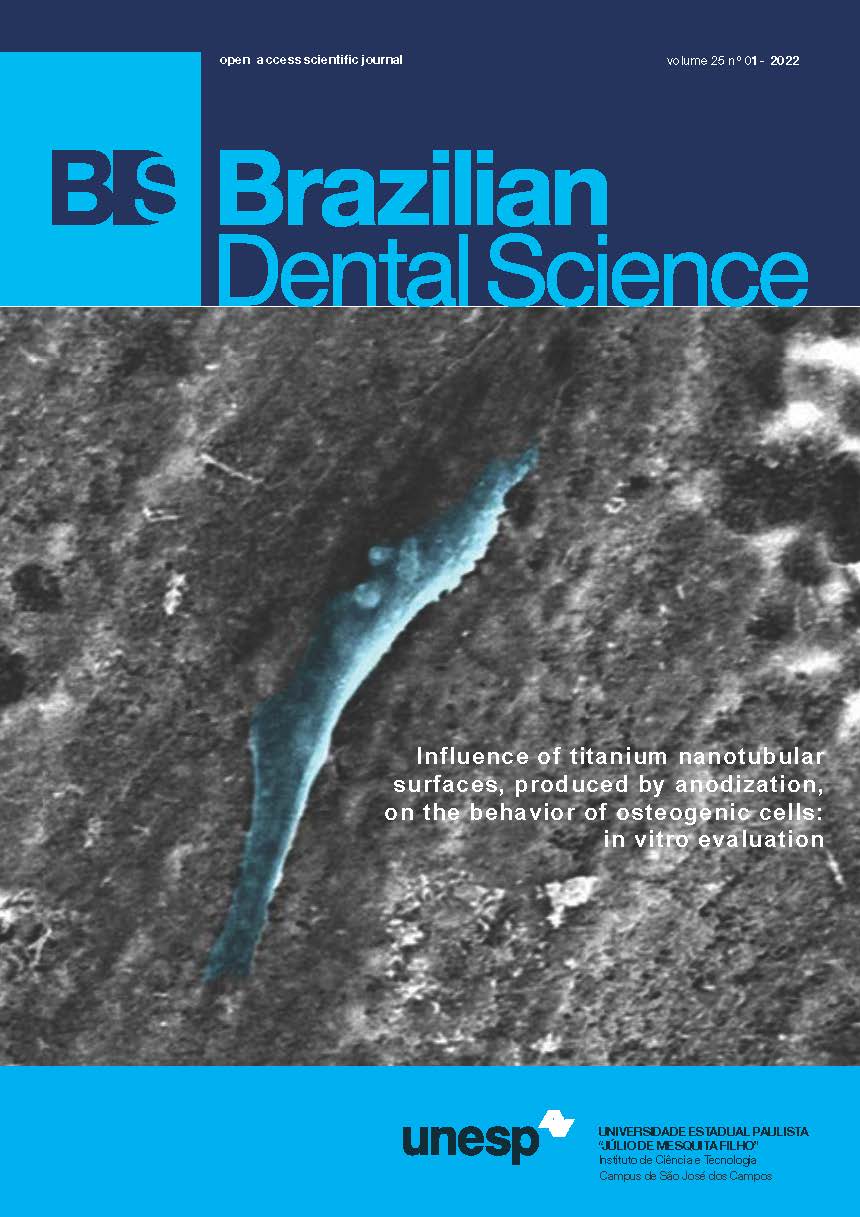A Effect of laser-assisted retrograde cavity preparation on push-out-bond-strength of mineral trioxide aggregate and calcium-enriched-mixture-cement
DOI:
https://doi.org/10.4322/bds.2022.e2736Abstract
Objective: This study aimed to determine the push-out-bond-strength(PBS) of mineral trioxide aggregate
(BIOMTA+) and calcium-enriched-mixture-cement (CEM) in retrograde cavities prepared using Er: YAG laser
and stainless-steel bur. Material and Methods: The root canals of 60 extracted single-rooted human teeth were
prepared, filled and their apical portion of 3-mm were resected using a diamond bur and randomly divided
into four groups according to technique of retrograde preparation and filling material as follows(n=15):
Group1: bur/ BIOMTA+ ,Group2: bur/ CEM, Group3: Er:YAG laser/ BIOMTA+, Group4: Er:YAG laser/ CEM.
PBS test were performed to specimens and failure modes were evaluated. The data were statistically analyzed
with ANOVA, Post-Hoc Tukey and t tests (p< 0.05). Results: CEM was exhibited higher than bond strength
compared to BIOMTA+ in retrograde cavity prepared using laser (p= 0.021) and BIOMTA+ in retrograde cavity
prepared using bur was exhibited higher than bond strength compared to in retrograde cavities prepared using
laser (p= 0.024). Failure modes were dominantly cohesive in all groups tested and one representative specimen
each failure mode was examined in SEM and the general characteristics of the failure modes were confirmed.
Conclusion: With in the limitations of the present study, when used CEM, Er: YAG laser-assisted retrograde
cavity preparation positively affected the bond strength values compared to BIO MTA+. Considering its optimal
adhesion, the calcium-enriched-mixture-cement (CEM) might be a good option as a filling material in retrograde
cavities in clinical use.
KEYWORDS
Calcium-Enriched-Mixture-Cement (CEM); Er: YAG laser; Mineral trioxide aggregate; Retrograde cavity preparation.
Downloads
Downloads
Published
Versions
- 2022-03-29 (4)
- 2022-02-02 (3)
- 2022-02-02 (2)
- 2022-02-02 (1)
How to Cite
Issue
Section
License
Brazilian Dental Science uses the Creative Commons (CC-BY 4.0) license, thus preserving the integrity of articles in an open access environment. The journal allows the author to retain publishing rights without restrictions.
=================




























